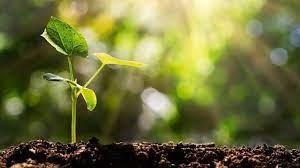Introduction:
Spermology, often colloquially referred to as seed study, is a multidisciplinary field that encompasses the study of seeds, their characteristics, functions, and the pivotal role they play in the life cycle of plants. Seeds, often overlooked in their humble appearance, are remarkable capsules of life, holding the genetic information necessary for plant reproduction. In this comprehensive exploration, we delve into the fascinating realm of spermology, unraveling the intricacies of seed structure, the diversity of seed types, their ecological significance, and the critical role they play in sustaining biodiversity and ecosystems worldwide.
I. The Basics of Spermology:
A. Definition:
- Spermology: The term “spermology” is derived from the Greek word “sperma,” meaning seed, and “logos,” meaning study or science.
- Seed Study: Spermology involves the scientific examination and analysis of seeds.
B. Historical Context:
- Early Observations: Human fascination with seeds dates back to ancient civilizations, where seeds were recognized for their importance in agriculture and sustenance.
- Scientific Foundations: The formal study of seeds gained momentum with the development of botanical sciences in the 17th and 18th centuries.
II. Seed Structure and Morphology:
A. Seed Coat:
- Protective Layer: The outer covering of a seed that protects it from external influences.
- Permeable Features: The seed coat may have permeable structures allowing for gas exchange and water absorption.
B. Embryo:
- Miniature Plant: The embryonic plant within the seed that develops into a mature plant upon germination.
- Cotyledons: The first leaves of the embryo that serve as nutrient storage or the first photosynthetic organs.
C. Endosperm:
- Nutrient Reserve: Tissue containing stored nutrients, providing nourishment for the developing embryo.
- Varied Compositions: Endosperm composition varies among different seed types, serving different functions.
III. Types of Seeds:
A. Gymnosperms:
- Naked Seeds: Seeds not enclosed in fruits.
- Conifers and Cycads: Examples of gymnosperms with exposed seeds.
B. Angiosperms:
- Enclosed Seeds: Seeds enclosed within fruits.
- Monocots and Dicots: Angiosperms classified based on the number of cotyledons.
C. Non-Flowering Plants:
- Ferns and Mosses: Reproduction through spores, not seeds.
- Seedless Vascular Plants: A group that includes ferns and horsetails.
IV. Seed Germination:
A. Activation of Embryo:
- Water Uptake: Absorption of water triggers metabolic changes in the embryo.
- Hormonal Activation: Plant hormones like gibberellins play a role in the germination process.
B. Emergence of Radicle:
- Root Development: The radicle, or embryonic root, emerges first, anchoring the seedling in the soil.
- Shoot Emergence: The shoot emerges, developing into the aerial part of the plant.
C. Nutrient Utilization:
- Mobilization of Reserves: Stored nutrients in cotyledons or endosperm are utilized.
- Photosynthesis Initiation: Once the shoot emerges, the plant begins photosynthesizing to produce its own food.
V. Ecological Significance:
A. Biodiversity Conservation:
- Seed Banks: Preservation of seeds in seed banks for biodiversity conservation.
- Ecological Restoration: Seeds play a vital role in restoring ecosystems through natural processes.
B. Food Chain Dynamics:
- Primary Producers: Plants, starting from seeds, form the base of the food chain.
- Herbivores and Predators: Animals rely on seeds directly or indirectly for sustenance.
VI. Seed Dispersal:
A. Mechanisms:
- Wind Dispersal: Seeds equipped with structures for wind dispersal, such as wings or parachutes.
- Animal Dispersal: Seeds may attach to fur or be ingested by animals, facilitating dispersal.
B. Adaptations:
- Seed Coatings: Adaptations in seed coatings for effective dispersal.
- Mimicry: Seeds may mimic the appearance or scent of fruits to attract dispersers.
VII. Agricultural Importance:
A. Crop Production:
- Seed Agriculture: The foundation of agriculture, where seeds are sown for crop production.
- Genetic Improvement: Selective breeding and genetic modification to enhance crop seed characteristics.
B. Global Food Security:
- Seed Banks: Global repositories safeguarding diverse seed varieties for future food security.
- Sustainable Agriculture: The conservation and responsible use of seeds for long-term agricultural sustainability.
VIII. Challenges and Future Directions:
A. Seed Preservation:
- Threats to Diversity: Loss of seed diversity due to monoculture and habitat destruction.
- Climate Change: Altered environmental conditions affecting seed germination and distribution.
B. Biotechnology and Genetic Engineering:
- Improved Traits: Developing seeds with enhanced traits, such as drought resistance or higher nutritional content.
- Ethical Considerations: Ethical debates surrounding genetically modified seeds and their impact on ecosystems.
IX. Conclusion:
Spermology, the science of seed study, unveils the profound importance of these small but mighty capsules of life. From their diverse structures to their ecological significance, seeds are integral to the sustenance of life on Earth. This comprehensive exploration has journeyed through the basics of spermology, seed structure and morphology, types of seeds, germination processes, ecological roles, and their pivotal importance in agriculture. As we navigate the challenges and future directions of spermology, it becomes evident that the study of seeds is not only a scientific endeavor but a cornerstone of sustainable practices, biodiversity conservation, and global food security. Embracing the profound significance of seeds, we pave the way for a future where spermology continues to shape our understanding of plant life, ecosystems, and the delicate balance that sustains our planet.
